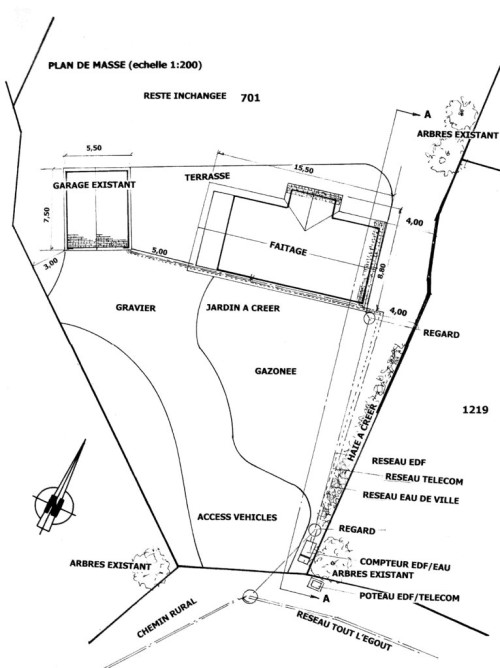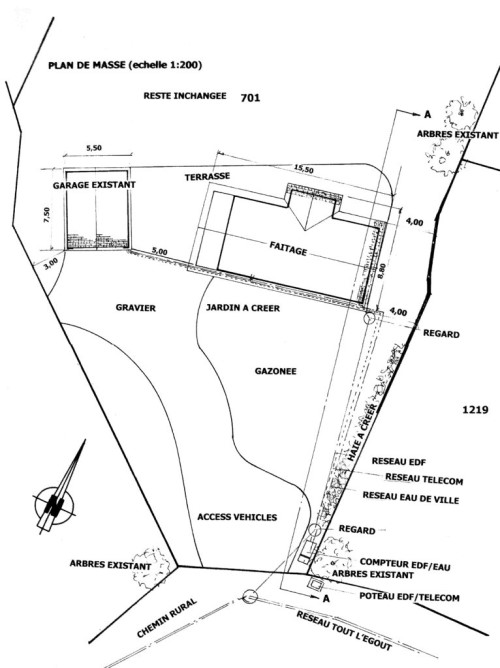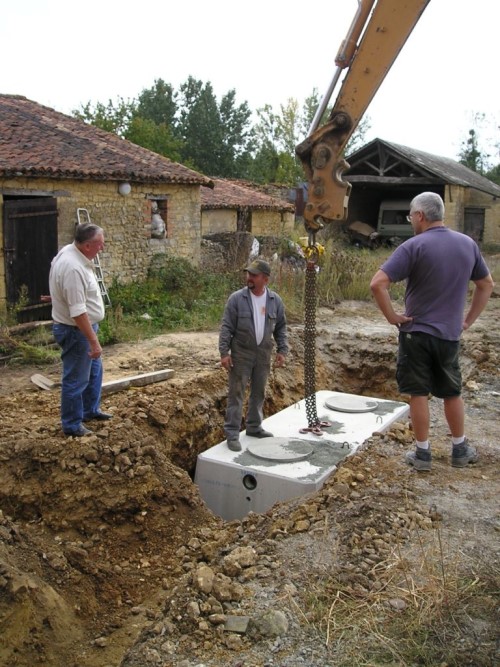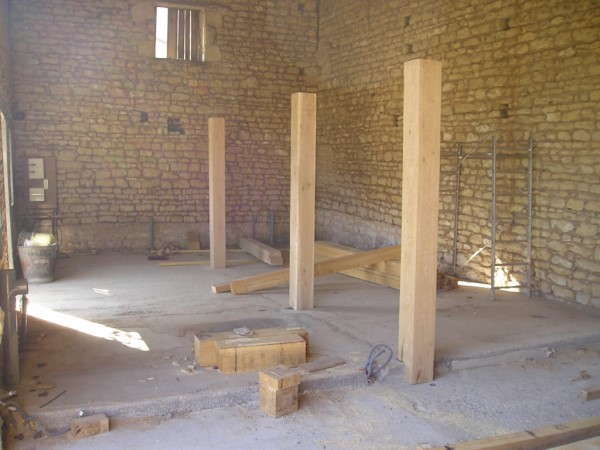Building in France: From Grassy Knoll to Ground Works, Foundations and Footings

Following on from Building in France: from grassy knoll to approved plans. Renovation expert Stephen Davies shares part two of his case study of a complete new-build in France. In this detailed step-by-step description, we follow the development of the project from an empty plot to the ground works, foundations and footings.
Ground works, Foundations and Footings
The intention was to look at this case and follow it along the logical sequence from planning to completion. To do this we would have concentrated on the specifics of the foundations/footings of this project. At this point we decided that the whole topic of Ground-works extends beyond this project and maybe a general look at what this stage of any project entails would be more useful.
We do this with the usual caveat that anything written is meant as general notes and information and not detailed guidance as to how and what you should be doing with any project you are undertaking. Specialist advice is always required with these activities.
Footings or foundations are the parts of any structure or building that connects it to the ground, as well as transferring any loads from the building into the ground. Sounds easy, right? The type, make- up and chosen form of any foundations will depend on what is being built. Slab, ring, block and beam are all terms that will be encountered and here it is essential that a full understanding of loads and strengths required will need to be undertaken. Again specialist advice from ground-workers, builders is invaluable (as is the 10 year guarantee!)
Having a set of plans that have been passed will mean that a” Plan de Masse” exists as showing where the building will be positioned on the plot. It will also show position of service elements of water and electric supplies, as well as position of waste water treatment, as in fosse septique or mains drainage

What this gives is the information required to dig, to a suitable depth, in the correct position, into the ground to give a series of trenches or large expanse of ground that is level and firm to allow the chosen type of foundation to be created. It is also a consideration that if, at the same time, the various trenches for service runs can be dug, as well as fosse septique installation, some level of cost saving and future disruption can be made.

It is also worth noting that as the plans will have shown position of rooms etc it should be possible to make provision for conduits for services like water and electric cables to be positioned so that any future installations can be accommodated within the slab of the chosen material before it is laid. This saves a big digging out exercise later. A cautionary word here. If the fosse is being installed at the same time and pipe runs to it from the house installed ensure that the “fall” of the pipe to it is at least downhill. Water, and other “stuff” does not flow uphill!!
How and what the footings or foundations of your project will determine style and layout. They must be of a suitable size and structure to take all the loadings anticipated and any earth movements taken into consideration. Many local authorities now have a “seismic”rating which shows any anticipated earth movements and sometimes dictates special measures may need to be taken to mitigate against any seismic events! The calculations re weight, load kilo-newtons per metre, are the subjects of many studies. Ask the experts and be prepared to pay for their expertise.
It would also be prudent at this stage to mention that the component parts that make up any foundation, footing installation can contain things like damp proofing, certain levels of in slab insulation and in some instances anti insect (termite to name but one) treatment. As well as the structural elements of strengthening and connection to distinct areas and or expansion joints. All dependent on what and how you are wanting to support your build.
Under floor heating as an option is best considered now as it determines heights and types of materials used.
Talking of support. It is well worth making sure that if any of the build that is resting on the footing can be considered as “load bearing” then provision could be made for extra support. This is applicable to load bearing walls as well as beams that are destined to hold up an upper floor. Beams may require extra support to mitigate against the “stiletto heel” effect where a single point of load is applied to a floor.

As can be seen from the above the topic of ground works covers a multitude of scenarios. I always stress that each individual circumstance is different and case specific advice and counsel should be sought to ensure compliance with good practice. It’s all about making sure that what is in the ground, holding up your project, is fit for purpose and serves well into the future.
 Stephen Davies is a long-time FrenchEntrée contributor on building and renovation matters in France. He runs Renovate in France, a resource of architectural and support services and information, and works full time as a designer, planner and project manager on renovations and new builds.
Stephen Davies is a long-time FrenchEntrée contributor on building and renovation matters in France. He runs Renovate in France, a resource of architectural and support services and information, and works full time as a designer, planner and project manager on renovations and new builds.
The information in this article is provided for informational purposes and does not constitute legal, professional or financial advice. We encourage you to seek the advice of a relevant professional before acting on any of this information. Any links to other sites are provided as sources and assistance, and are not intended as an endorsement.
Share to: Facebook Twitter LinkedIn Email
Leave a reply
Your email address will not be published. Required fields are marked *





